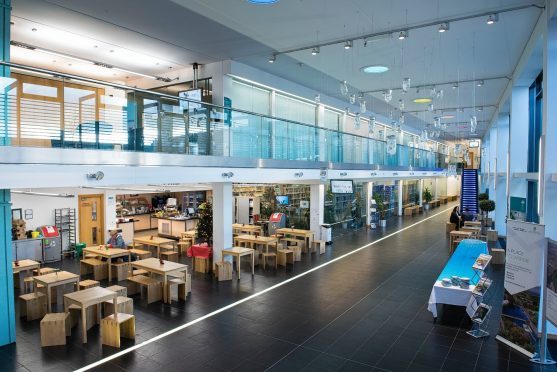Thousands of patients with chronic health conditions in the Highlands are set to benefit from a brand new method of home-delivered digital healthcare.
NHS Highland’s Technology Enabled Care project helps sufferers of heart failure, diabetes and chronic pulmonary disease, by supplying them with a tablet computer device to monitor their blood pressure.
Details of the new technology were revealed yesterday during an event at the Centre for Health Science in Inverness which welcomed six new tenants, 29 employees and eight students to the building.
The event also marked the growth of life sciences in a region which now has 70 life science organisations, a combined turnover of about £194million and supports nearly 1,800 full time equivalent jobs.
The Centre for Health Science was developed by Highlands and Islands Enterprise (HIE) to house like-minded organisations under one roof to encourage research and commercial collaboration in life sciences.
Other new tenants to arrive at the centre are Pathfinder Accelerator, ASPIRENorth, Robert Gordon University and Craegmoor, while LifeScan has located its clinical team into the centre’s Highland Diabetes Institute.
The new digital healthcare project, which is funded by the Scottish Government, will have 100 users by January and the aim is to roll it out to 2,000 patients by next July, reaching 4,000 in 2017.
Data recorded by patients on their tablet devices is automatically fed into their clinician’s desktop and anything which causes concern triggers an alarm that is built into the software.
The initiative will be particularly helpful for older people living in remote communities across the region, improving access to the NHS while cutting unnecessary hospital admissions.
Project lead Laic Khalique said: “Our aim is to ensure chronic conditions are monitored within the community and hospital visits are reserved for trauma cases and emergency surgery.”
After the meeting he added: “The reason behind this project is not to save money but to give patients greater choice in how they are treated and to give them a better healthcare service.
“The new broadband network is due to be completed by the end of next year and for us it represents an unprecedented opportunity to deliver more healthcare services at a distance. We really want to start cutting down on the three-hour long trips for our patients to get to the hospital and are really keen to look at innovative ways of delivering healthcare in the Highlands.
“The tenancy at the Centre for Health Science is very important because it means we can collaborate with senior clinicians, small businesses and come up with exciting digital health products developed by people in the Highlands, made by people in the Highlands and delivered as a resource by people in the Highlands.”
